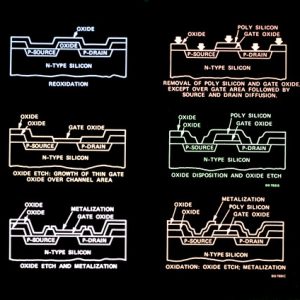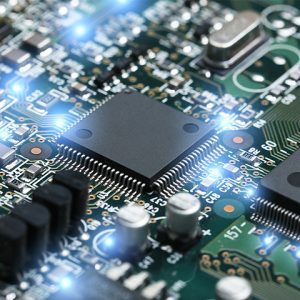
Fiber Optic Connector Cleaning Tips
The golden rule for fiber systems is to inspect before you connect. Fiber optics are prone to contamination from many sources including manufacturing, shipping and handling.
Technicians need cleaning products that work quickly, reliably and cost-effectively. There are several options for cleaning fiber connector end faces in patch panels, hardware devices and bulkhead adapters/receptacles.
Dry Cleaning
When cleaning fiber optics, it is important to always inspect the connector before and after you clean it. A poorly cleaned connector can degrade the signal, leading to data loss or network downtime. This can cost businesses money and lead to customer dissatisfaction. A simple test of the connection with a microscope can identify contaminants and determine whether or not they are removable.
The best way to clean a connector is with a combination of dry and wet cleaning. The combination cleaning method combines a small amount of solvent with a lint-free wipe and allows the operator to use the same tool to clean and inspect the connector. This technique is safer than traditional IPA based wet cleaners and allows the operator to control contamination and ensure that a proper inspection is performed.
It is also critical to have the right cleaning tools for the job. Lint-free wipes and specialized cleaning sticks are designed to remove dirt and dust particles without damaging the connector end-face. The use of these tools reduces the risk of damage and improves signal performance, ensuring that the connector is clean and ready to be connected.
Wet Cleaning
Whether you’re cleaning up after mating and unmating fiber connectors or just yanking them out, it’s important to keep your hands clean. This ensures that you don’t introduce contaminants to the end-face of the connector and keeps the interface in good condition.
Wet cleaning involves using a solvent to remove contamination from the connector end-face. A common choice is 99% isopropyl alcohol with lint-free wipes. However, it’s important to use only enough liquid to adequately moisten the wipe. Too much will seep into the connector and compromise its performance.
Other wet cleaning methods include sprays (air duster, canned air, compressed air) and pre-saturated wipes. You’ll also want to consider the materials compatibility of your chosen solvent. Some cleaners can attack epoxy and other coatings on optical fiber connectors and their housings. Look for a wet cleaning fluid that can be used with most connectors without causing unwanted damage or surface crazing. Also, look for a cleaning solution that dries quickly fiber-optic-connector-cleaning to prevent solvent residue on the end-face of the connector. This makes the connector more vulnerable to recontamination.
Chemical Cleaning
Many factors can contaminate fiber optic end faces. Dust and particles from the environment can block or scatter light signals, while oils from fingers can create a film that attracts more dirt. Residues from adhesives or cleaning solvents not fully removed in previous attempts can also cause problems.
To remove these contaminants, the best way to clean is to use a combination of cleaning techniques. First, dry-clean with lint-free wipes and a cleaning stick or reel cleaner that’s made specifically for fiber optic connectors. Use just enough cleaning solution to moisten the wipe or stick and gently clean. Never apply excessive pressure, which can damage the end face or leave a residue.
Wet cleaning involves placing a few drops of a spectroscopic-grade cleaning solvent, such as isopropyl alcohol or methanol, on a lens tissue and wiping the end face of a fiber optic connector. Use a fiberscope or video inspection tool to ensure the end face is completely free of contamination and has no signs of streaking. A variety of cleaning pens that dispense a small amount of the appropriate solvent are available for this method.
Reel Cleaners
When it comes to preventing contamination, the best defense is to inspect before you connect. During installation, testing and maintenance, the golden rule is always to inspect the connector under high-magnification prior to mating it to another connector or connecting it to equipment.
To prevent dirt and debris from entering the optical fiber, use a reel cleaner. These are lint-free wipes that contain cleaning solvent. To use, lightly apply the cleaning solvent to a section of the wipe and clean the endface of the connector. Afterwards, use a dry section of the wipe to remove any residue.
Fluke Networks offers a number of fiber optic cleaning kits that include these reel cleaners, Quick Clean Cleaning Wipes and a cleaning pen. The kit options range from the simple to the comprehensive and cover a variety of application needs such as cleaning patch cords, cable ports or fiber end faces inside equipment. Some kits include a cleaning cube or card and others come with a convenient case that makes it easy to store the cleaning tools and supplies.
Cleaning Pens
Cleaning pens, like the RB-PEN125 model, are a mechanical tool that swipes the critical contact surface of an optical fiber connector to remove dust and foreign particles. They work much like an automated Cletop stick and are designed to fit LC and MU female connectors, commonly used as Fiber Optic assemblies couplers in patch panels and hardware devices. They have an indicator that shows when the cleaning tape is exhausted and are made from a lint free, non-abrasive wipe.
A clean connector is essential to the reliability of a fiber network. Even small dust particles or foreign material can cause power degradation and reversible damage to the ferrule end face. Good cleaning techniques, training and dependable tools will help to reduce signal degradation, residue cross contamination and lasting damage. Cleaning pens are a great addition to any technicians’ cleaning tools to ensure their connection points stay clear of contaminants. This is especially true for the MPO style connectors that are becoming more popular in high density data centers and industrial applications. MPO connectors have a larger area for contaminants to settle on and contaminate the contact surfaces, potentially leading to failure of the system.



